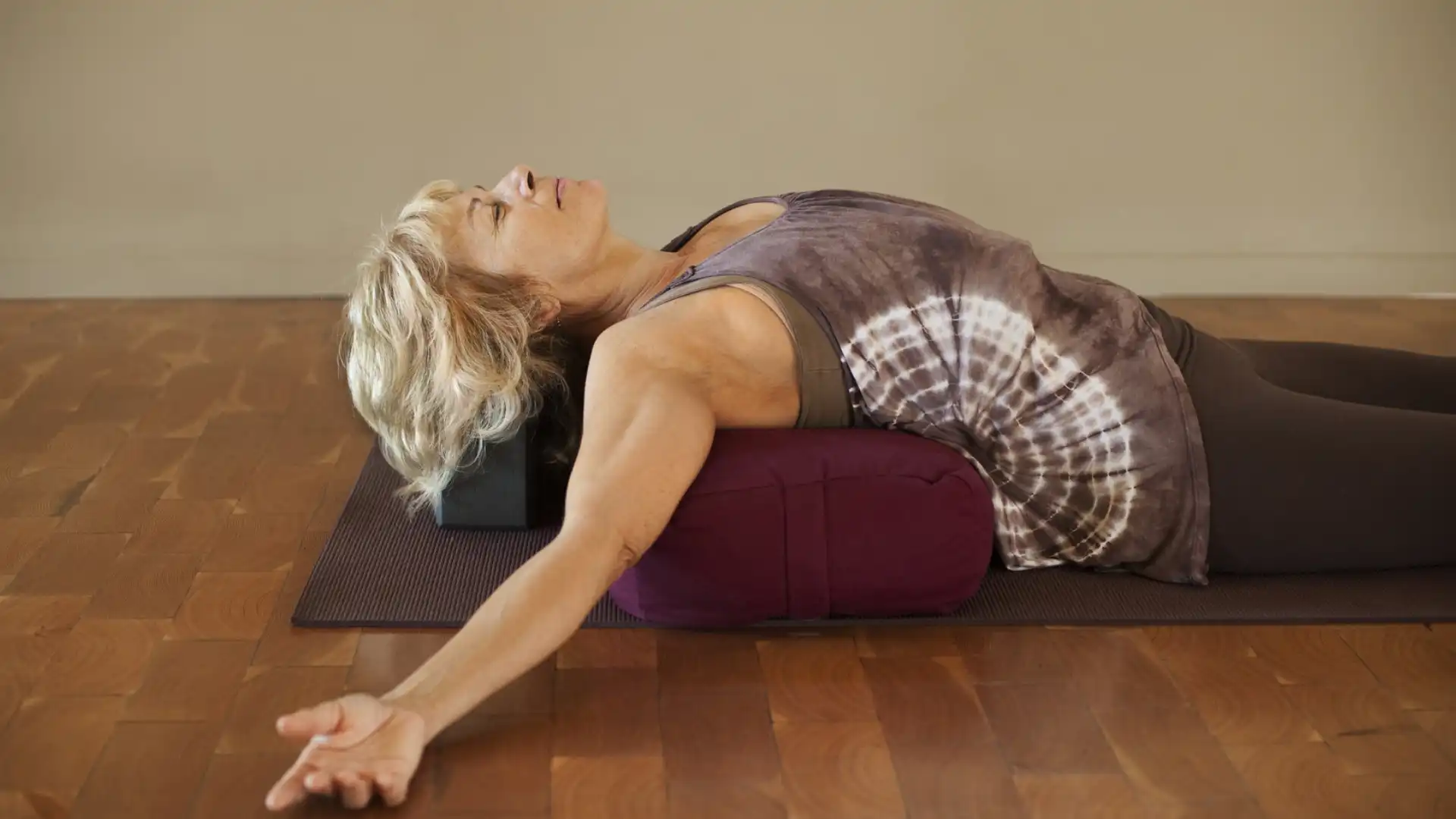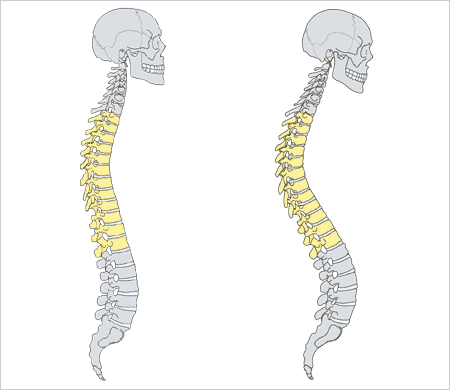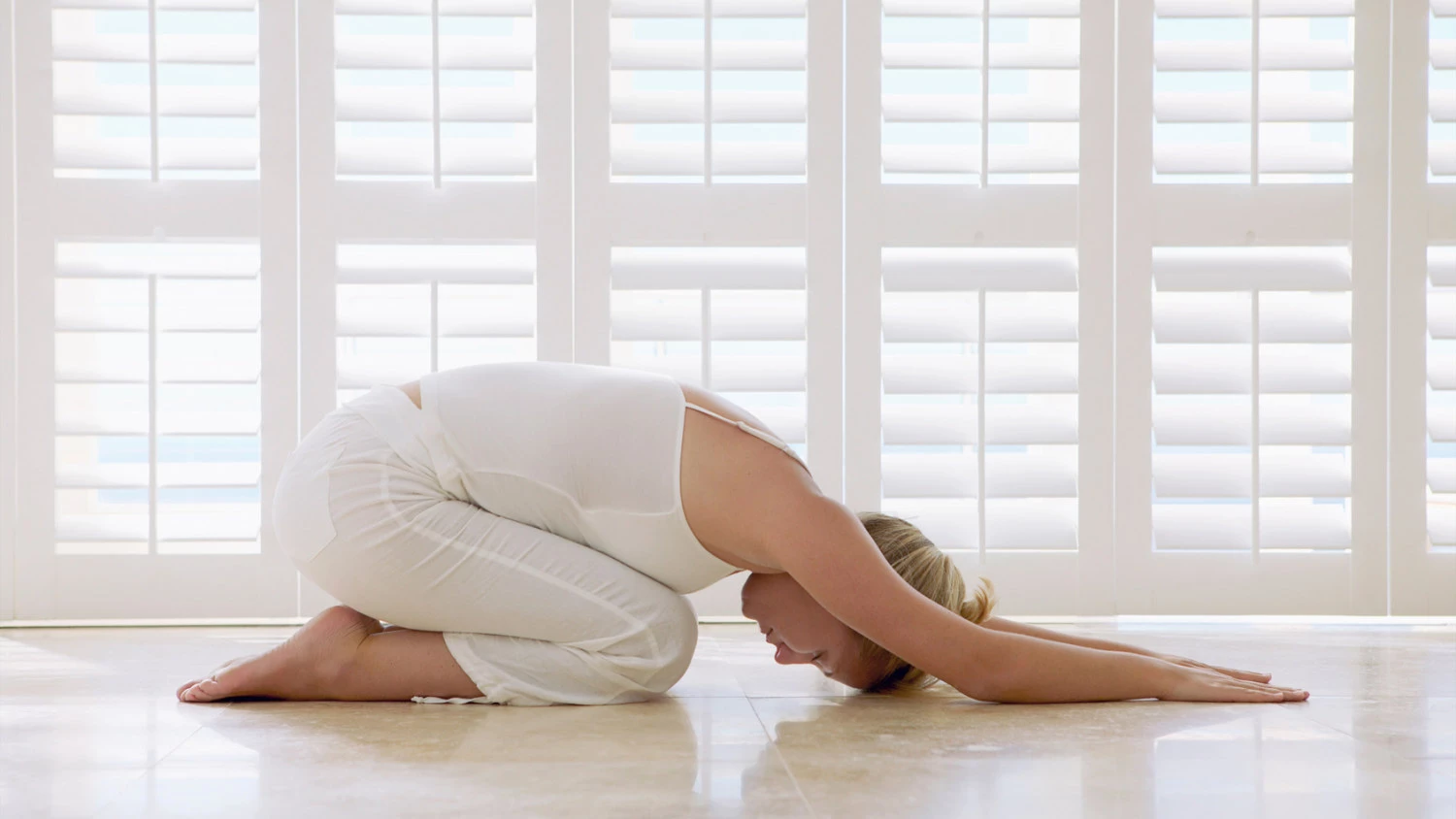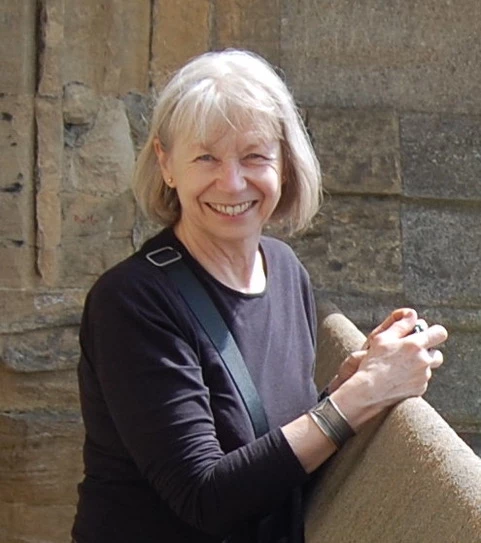Reverse the Curve: A 5-Minute Yoga Practice for Hyperkyphosis

We all have a kyphosis, or at least we ought to. Kyphosis is the natural outward curve of the upper back, which balances the inward curves of the neck and the low back. Hyperkyphosis is different. When the convex curve of our thoracic spine becomes exaggerated, we lose our ability to move in the opposite direction.
Sadly for us, we live in a society that encourages hyperkyphosis. Most of what we do, including typing, cooking, driving, reading, and gardening, encourages us to lift our shoulder blades, round our backs, and jut our heads forward. Nothing we do in our daily lives encourages us to bend over backwards—at least not physically. Over time, a rounded posture settles in and becomes the shape of our bodies. 
When I found my first Iyengar teacher, and the poses she called “chest-openings,” adding a slight but perceptible “m” to the word “ompenings,” I fell in love with them. At 39, my upper back was a dead zone, already stiffening into the curve I could see in my mother and big sister. It was liberating to learn that I could lie down over a rolled blanket, a bolster or a wood block, and ease the stiffness out of my back.
But it wasn’t just physical tightness that released. From the beginning, I’d get up out of these poses with a sense of lightness and—there’s no other word for it—openness, in my emotions and in my mind, as well as in my body.
(A normal curve and a hyper-kyphotic curve of the spine diagram pictured above-right.)
This makes perfect sense. By reversing the curve, we create space in the ribcage. More space means easier breathing, easier breathing means less tension, less tension means a better ability to deal with whatever emotional states arise. No wonder I could release so much more than muscle.
Can chest openings change your upper back even if you’ve already settled into a curve? Perhaps not all by themselves, but in a full yoga practice, yes, they can. By stretching some muscles and strengthening others you can make a permanent change in your posture.
5-Minute Yoga Practice for Chest Expansion
This five-minute yoga practice invites you to see what five minutes a day of chest opening might change in your life. If you already have a favorite setup, by all means, use it. If you’re new to yoga or don’t have many props, this chest opening with a rolled blanket (a rolled beach towel will do in a pinch) is a great place to start.
Check that your shoulders are being tugged away from your ears and your lower back is long before you straighten your legs.
How to Set Up
-
Roll a firm blanket into a tight roll, wide enough to support your back. For head support, put a yoga block or other support, such as a folded blanket or throw pillow, on the floor behind the blanket.

-
Sit down, knees bent, and roll back so your shoulder blades come to rest on the blanket. Your arms should rest on the floor, on the head side of the blanket, with your upper arms rolling from the inside to the outside, palms facing the ceiling.
-
With your shoulders lying firmly on the blanket, slide back until your head reaches the support behind the blanket. You should feel that the blanket is gently tugging your shoulder blades away from your ears.
-
With your knees still bent, press your feet down and lift your pelvis an inch or so from the floor. Lengthen your tailbone toward your ankles without changing the position of your shoulders on the blanket. Bring your pelvis back to the floor and straighten your legs, one at a time.
-
Now bring your awareness to the center of your chest. As you inhale, expand your heart center evenly in all directions. As you exhale, allow the weight of your body to release into the blanket and the floor.
-
If your head begins to feel pressed into the block, try removing the block and using something softer, such as a folded blanket or towel, or a throw pillow. Experiment with your head support to find what’s most comfortable for you.
-
Stay in the pose for five minutes, then bend your knees and roll to your right side. Stay there for a breath or two, then press your left hand into the floor and look down as you sit up.
-
Move the blanket off your mat, lie back down with your knees bent. Allow your back to settle into the floor and return to neutral. Stay for a few breaths, then roll to the right and sit up.
-
If your lower back feels pinched in this pose, bend your knees, bring your feet to the outer edges of the mat and let your knees drop together. If you feel hung up on the blanket, or uncomfortable, try moving an inch or two in the direction of your head.
How Chest Opening Benefits the Back and Shoulders
Most of what we do in a day—driving, using a computer, cooking dinner—involves lifting our shoulders, rounding our upper backs and stretching our heads forward. Chest-opening poses give us a welcome chance to reverse the curve. They can help us breathe more deeply, bring our shoulders back into place, relieve upper back tension and softly stretch the front chest muscles. 
As a five-minute practice, this chest-opening pose can easily stand on its own. You might round it out by moving into Balasana (Child’s Pose) (photo right), Adho Mukha Svanasana (Downward-Facing Dog Pose) and back to Child’s Pose. In a longer practice, do your chest opening near the beginning, and enjoy your expanded chest in the rest of your practice.
Study with YogaUOnline and Olga Kabel – Yoga for Every Body: How to Adapt Yoga Poses for Different Situations, Conditions, and Purposes.
More yoga basics and helpful practice tips from Eve Johnson – Yoga Strap Magic: Use a Long Strap to Put Your Shoulders in Place.
Reprinted with permission from Eve Johnson‘s myfiveminuteyoga.com

EVE JOHNSON is a certified Iyengar Yoga teacher with 18 years of teaching experience. Since 2016, she has been exploring Spinefulness, a postural system based on the work of Noelle Perez-Christiaens, one of BKS Iyengar’s first western students and the author of Sparks Of Divinity. Eve especially values Spinefulness for the presence and ease it brings to yoga postures and to everyday life. She teaches at Yoga on 7th, in the South Main neighborhood of Vancouver, Canada.



